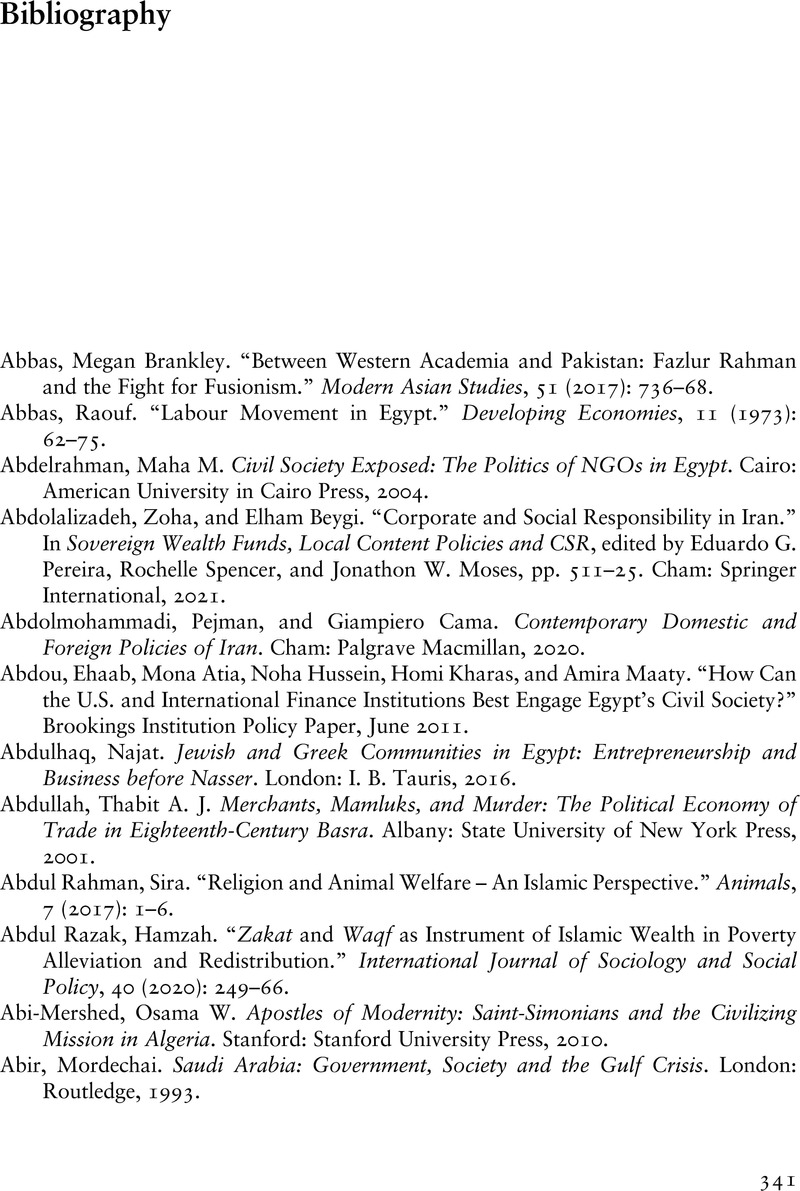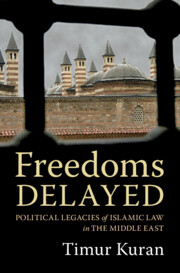Book contents
Bibliography
Published online by Cambridge University Press: 20 July 2023
Summary

- Type
- Chapter
- Information
- Freedoms DelayedPolitical Legacies of Islamic Law in the Middle East, pp. 341 - 410Publisher: Cambridge University PressPrint publication year: 2023



